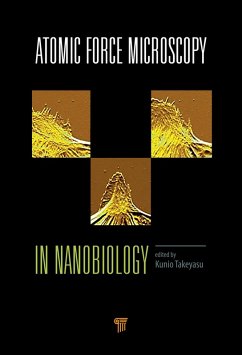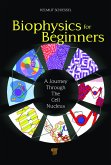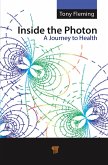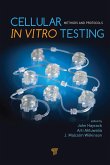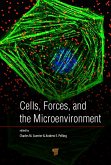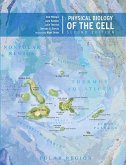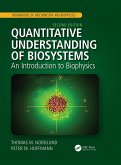Atomic Force Microscopy in Nanobiology (eBook, PDF)
Redaktion: Takeyasu, Kunio
112,95 €
112,95 €
inkl. MwSt.
Sofort per Download lieferbar

56 °P sammeln
112,95 €
Als Download kaufen

112,95 €
inkl. MwSt.
Sofort per Download lieferbar

56 °P sammeln
Jetzt verschenken
Alle Infos zum eBook verschenken
112,95 €
inkl. MwSt.
Sofort per Download lieferbar
Alle Infos zum eBook verschenken

56 °P sammeln
Atomic Force Microscopy in Nanobiology (eBook, PDF)
Redaktion: Takeyasu, Kunio
- Format: PDF
- Merkliste
- Auf die Merkliste
- Bewerten Bewerten
- Teilen
- Produkt teilen
- Produkterinnerung
- Produkterinnerung

Bitte loggen Sie sich zunächst in Ihr Kundenkonto ein oder registrieren Sie sich bei
bücher.de, um das eBook-Abo tolino select nutzen zu können.
Hier können Sie sich einloggen
Hier können Sie sich einloggen
Sie sind bereits eingeloggt. Klicken Sie auf 2. tolino select Abo, um fortzufahren.

Bitte loggen Sie sich zunächst in Ihr Kundenkonto ein oder registrieren Sie sich bei bücher.de, um das eBook-Abo tolino select nutzen zu können.
Recent developments in atomic force microscopy (AFM) have been accomplished through various technical and instrumental innovations, including high-resolution and recognition imaging technology under physiological conditions, fast-scanning AFM, and general methods for cantilever modification and force measurement. All these techniques are now highly
- Geräte: PC
- mit Kopierschutz
- eBook Hilfe
- Größe: 64.6MB
Andere Kunden interessierten sich auch für
![Cellular Analysis by Atomic Force Microscopy (eBook, PDF) Cellular Analysis by Atomic Force Microscopy (eBook, PDF)]() Malgorzata LekkaCellular Analysis by Atomic Force Microscopy (eBook, PDF)93,95 €
Malgorzata LekkaCellular Analysis by Atomic Force Microscopy (eBook, PDF)93,95 €![Biophysics for Beginners (eBook, PDF) Biophysics for Beginners (eBook, PDF)]() Helmut SchiesselBiophysics for Beginners (eBook, PDF)112,95 €
Helmut SchiesselBiophysics for Beginners (eBook, PDF)112,95 €![Inside the Photon (eBook, PDF) Inside the Photon (eBook, PDF)]() Tony FlemingInside the Photon (eBook, PDF)112,95 €
Tony FlemingInside the Photon (eBook, PDF)112,95 €![Cellular In Vitro Testing (eBook, PDF) Cellular In Vitro Testing (eBook, PDF)]() Cellular In Vitro Testing (eBook, PDF)96,95 €
Cellular In Vitro Testing (eBook, PDF)96,95 €![Cells, Forces, and the Microenvironment (eBook, PDF) Cells, Forces, and the Microenvironment (eBook, PDF)]() Cells, Forces, and the Microenvironment (eBook, PDF)112,95 €
Cells, Forces, and the Microenvironment (eBook, PDF)112,95 €![Physical Biology of the Cell (eBook, PDF) Physical Biology of the Cell (eBook, PDF)]() Rob PhillipsPhysical Biology of the Cell (eBook, PDF)93,95 €
Rob PhillipsPhysical Biology of the Cell (eBook, PDF)93,95 €![Quantitative Understanding of Biosystems (eBook, PDF) Quantitative Understanding of Biosystems (eBook, PDF)]() Thomas M. NordlundQuantitative Understanding of Biosystems (eBook, PDF)46,95 €
Thomas M. NordlundQuantitative Understanding of Biosystems (eBook, PDF)46,95 €-
-
-
Recent developments in atomic force microscopy (AFM) have been accomplished through various technical and instrumental innovations, including high-resolution and recognition imaging technology under physiological conditions, fast-scanning AFM, and general methods for cantilever modification and force measurement. All these techniques are now highly
Dieser Download kann aus rechtlichen Gründen nur mit Rechnungsadresse in A, B, BG, CY, CZ, D, DK, EW, E, FIN, F, GR, HR, H, IRL, I, LT, L, LR, M, NL, PL, P, R, S, SLO, SK ausgeliefert werden.
Produktdetails
- Produktdetails
- Verlag: Taylor & Francis eBooks
- Seitenzahl: 458
- Erscheinungstermin: 19. April 2016
- Englisch
- ISBN-13: 9789814411592
- Artikelnr.: 41074760
- Verlag: Taylor & Francis eBooks
- Seitenzahl: 458
- Erscheinungstermin: 19. April 2016
- Englisch
- ISBN-13: 9789814411592
- Artikelnr.: 41074760
- Herstellerkennzeichnung Die Herstellerinformationen sind derzeit nicht verfügbar.
Kunio Takeyasu was trained as a zoologist and neuro-pharmacologist in his early career when he was a graduate student at Hiroshima University and Osaka University. After his postdoctoral research on the molecular and cell biological aspects of membrane proteins such as acetylcholine receptors and ion-motive ATPases at Cornell University and the Johns Hopkins University, he joined the University of Virginia as an assistant professor in 1988 and started to utilize atomic force microscopy (AFM) in biological studies. After four years of research and teaching at The Ohio State University, he moved to Kyoto University as a full professor in 1995. Since then, he has been developing technologies for biological application of AFM. His most recent research has been focused on single-molecule imaging of membrane proteins and chromatin at sub-second time region with nanometer space resolution. Prof. Takeyasu has been a member of the Biophysical Society and the American Society for Cell Biology.
Basics for AFM. A Short Story of AFM in Biology. Protocols for Specimen and
Substrate Preparation, and Data Correction Methods. Chemical Modification
of AFM Probe and Coupling with Biomolecules. Single Molecule Dissection and
Isolation Based on AFM Nano-Manipulations. Development of AFM Technology:
Imaging Dynamics and Complexities. Structural Biology with Cryo AFM and
Computational Modeling. Development of Non-Contact High-Resolution AFM and
its Biological Applications. Development of Recognition Imaging - From
Molecule to Cells. Development of High-Speed AFM and Its Biological
Applications. Real-Time AFM Combined with an Inverted Optical Microscope
for Wetcell/Tissue Imaging. Imaging Membranes, Proteins and DNA. AFM
imaging of Cells (Fixed and Living) and of Particularcellular Organelles
and Compartments. Determination of the Architecture of Multi-Subunit
Proteins Using AFM Imaging. Capturing Membrane Proteins at Work. Enzymes
and DNA: Molecular Motors in Action. Genome Folding Mechanisms in the Three
Domains of Life Revealed by AFM Imaging. Imaging, Force Spectroscopy and
Physiology. Membrane Dynamics: Lipid-Protein Interaction Studied by AFM.
Nano Surgery and Cytoskeletal Mechanics of Single Cell. Functional
Investigations on Nuclear Pores with Atomic Force Microscopy.
Mechanotransduction: Probing its Mechanisms at the Nanoscale using the
Atomic Force Microscope.
Substrate Preparation, and Data Correction Methods. Chemical Modification
of AFM Probe and Coupling with Biomolecules. Single Molecule Dissection and
Isolation Based on AFM Nano-Manipulations. Development of AFM Technology:
Imaging Dynamics and Complexities. Structural Biology with Cryo AFM and
Computational Modeling. Development of Non-Contact High-Resolution AFM and
its Biological Applications. Development of Recognition Imaging - From
Molecule to Cells. Development of High-Speed AFM and Its Biological
Applications. Real-Time AFM Combined with an Inverted Optical Microscope
for Wetcell/Tissue Imaging. Imaging Membranes, Proteins and DNA. AFM
imaging of Cells (Fixed and Living) and of Particularcellular Organelles
and Compartments. Determination of the Architecture of Multi-Subunit
Proteins Using AFM Imaging. Capturing Membrane Proteins at Work. Enzymes
and DNA: Molecular Motors in Action. Genome Folding Mechanisms in the Three
Domains of Life Revealed by AFM Imaging. Imaging, Force Spectroscopy and
Physiology. Membrane Dynamics: Lipid-Protein Interaction Studied by AFM.
Nano Surgery and Cytoskeletal Mechanics of Single Cell. Functional
Investigations on Nuclear Pores with Atomic Force Microscopy.
Mechanotransduction: Probing its Mechanisms at the Nanoscale using the
Atomic Force Microscope.
Basics for AFM. A Short Story of AFM in Biology. Protocols for Specimen and
Substrate Preparation, and Data Correction Methods. Chemical Modification
of AFM Probe and Coupling with Biomolecules. Single Molecule Dissection and
Isolation Based on AFM Nano-Manipulations. Development of AFM Technology:
Imaging Dynamics and Complexities. Structural Biology with Cryo AFM and
Computational Modeling. Development of Non-Contact High-Resolution AFM and
its Biological Applications. Development of Recognition Imaging - From
Molecule to Cells. Development of High-Speed AFM and Its Biological
Applications. Real-Time AFM Combined with an Inverted Optical Microscope
for Wetcell/Tissue Imaging. Imaging Membranes, Proteins and DNA. AFM
imaging of Cells (Fixed and Living) and of Particularcellular Organelles
and Compartments. Determination of the Architecture of Multi-Subunit
Proteins Using AFM Imaging. Capturing Membrane Proteins at Work. Enzymes
and DNA: Molecular Motors in Action. Genome Folding Mechanisms in the Three
Domains of Life Revealed by AFM Imaging. Imaging, Force Spectroscopy and
Physiology. Membrane Dynamics: Lipid-Protein Interaction Studied by AFM.
Nano Surgery and Cytoskeletal Mechanics of Single Cell. Functional
Investigations on Nuclear Pores with Atomic Force Microscopy.
Mechanotransduction: Probing its Mechanisms at the Nanoscale using the
Atomic Force Microscope.
Substrate Preparation, and Data Correction Methods. Chemical Modification
of AFM Probe and Coupling with Biomolecules. Single Molecule Dissection and
Isolation Based on AFM Nano-Manipulations. Development of AFM Technology:
Imaging Dynamics and Complexities. Structural Biology with Cryo AFM and
Computational Modeling. Development of Non-Contact High-Resolution AFM and
its Biological Applications. Development of Recognition Imaging - From
Molecule to Cells. Development of High-Speed AFM and Its Biological
Applications. Real-Time AFM Combined with an Inverted Optical Microscope
for Wetcell/Tissue Imaging. Imaging Membranes, Proteins and DNA. AFM
imaging of Cells (Fixed and Living) and of Particularcellular Organelles
and Compartments. Determination of the Architecture of Multi-Subunit
Proteins Using AFM Imaging. Capturing Membrane Proteins at Work. Enzymes
and DNA: Molecular Motors in Action. Genome Folding Mechanisms in the Three
Domains of Life Revealed by AFM Imaging. Imaging, Force Spectroscopy and
Physiology. Membrane Dynamics: Lipid-Protein Interaction Studied by AFM.
Nano Surgery and Cytoskeletal Mechanics of Single Cell. Functional
Investigations on Nuclear Pores with Atomic Force Microscopy.
Mechanotransduction: Probing its Mechanisms at the Nanoscale using the
Atomic Force Microscope.
